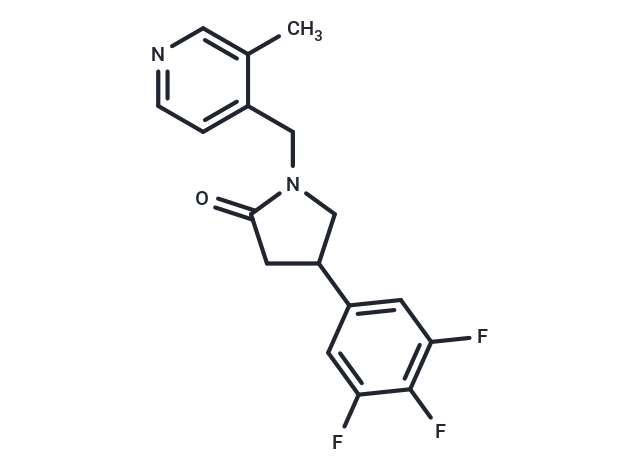Shopping Cart
Remove All Your shopping cart is currently empty
Your shopping cart is currently empty
UCB-J is a radioligand for the synaptic vesicle protein 2A (SV2A), utilized in positron emission tomography (PET)[4].


| Description | UCB-J is a radioligand for the synaptic vesicle protein 2A (SV2A), utilized in positron emission tomography (PET)[4]. |
| In vivo | UCB-J demonstrates a significant unbound fraction (0.46 ± 0.02) and undergoes moderate metabolic rates in plasma, with 39% ± 5% and 24% ± 3% of the parent compound remaining after 30 and 90 minutes, respectively[3]. This compound also exhibits substantial uptake and rapid kinetics within the monkey brain[3]. Notably, pretreatment of an animal with UCB-J (150 μg/kg, iv) results in a reduction of the whole brain Standard Uptake Value (SUV) to levels comparable to those of the centrum semiovale, thereby highlighting [18F]7's in vivo binding specificity towards SV2A[4]. |
| Molecular Weight | 320.315 |
| Formula | C17H15F3N2O |
| Cas No. | 1604786-87-9 |
| Smiles | Cc1cnccc1CN1CC(CC1=O)c1cc(F)c(F)c(F)c1 |
| Relative Density. | no data available |
| Storage | Powder: -20°C for 3 years | In solvent: -80°C for 1 year | Shipping with blue ice/Shipping at ambient temperature. |
| Size | Quantity | Unit Price | Amount | Operation |
|---|

Copyright © 2015-2026 TargetMol Chemicals Inc. All Rights Reserved.